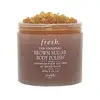What's inside
What's inside
 Key Ingredients
Key Ingredients

 Benefits
Benefits

 Concerns
Concerns

 Ingredients Side-by-side
Ingredients Side-by-side

Sucrose
HumectantPrunus Amygdalus Dulcis Oil
Skin ConditioningPrunus Armeniaca Kernel Oil
MaskingSimmondsia Chinensis Seed Oil
EmollientOenothera Biennis Oil
EmollientCitrus Limon Peel Oil
MaskingPassiflora Incarnata Seed Oil
Skin ProtectingCitrus Grandis Peel Oil
MaskingHelianthus Annuus Seed Oil
EmollientLitsea Cubeba Fruit Oil
MaskingCitrus Aurantium Bergamia Fruit Oil
MaskingCitrus Aurantium Dulcis Oil
MaskingCymbopogon Schoenanthus Oil
MaskingPanax Ginseng Root Extract
EmollientTocopherol
AntioxidantLimonene
PerfumingCitral
PerfumingLinalool
PerfumingBHT
AntioxidantTriethyl Citrate
MaskingSucrose, Prunus Amygdalus Dulcis Oil, Prunus Armeniaca Kernel Oil, Simmondsia Chinensis Seed Oil, Oenothera Biennis Oil, Citrus Limon Peel Oil, Passiflora Incarnata Seed Oil, Citrus Grandis Peel Oil, Helianthus Annuus Seed Oil, Litsea Cubeba Fruit Oil, Citrus Aurantium Bergamia Fruit Oil, Citrus Aurantium Dulcis Oil, Cymbopogon Schoenanthus Oil, Panax Ginseng Root Extract, Tocopherol, Limonene, Citral, Linalool, BHT, Triethyl Citrate
Sucrose
HumectantGlycerin
HumectantPolysorbate 20
EmulsifyingSilica
AbrasiveButyrospermum Parkii Butter
Skin ConditioningOenothera Biennis Oil
EmollientCitrus Aurantium Dulcis Oil
MaskingMacadamia Ternifolia Seed Oil
EmollientPrunus Amygdalus Dulcis Oil
Skin ConditioningCarthamus Tinctorius Seed Oil
MaskingPersea Gratissima Oil
Skin ConditioningVanilla Planifolia Fruit Extract
Skin ConditioningWheat Amino Acids
Skin ConditioningCaramel
Cosmetic ColorantRetinyl Palmitate
Skin ConditioningTocopheryl Acetate
AntioxidantTocopherol
AntioxidantColloidal Gold
AntimicrobialAvena Sativa Kernel Extract
AbrasiveWater
Skin ConditioningParfum
MaskingSorbic Acid
PreservativePotassium Sorbate
PreservativeSodium Benzoate
MaskingPhenoxyethanol
PreservativeCaprylyl Glycol
EmollientAscorbic Acid
AntioxidantCI 77891
Cosmetic ColorantMica
Cosmetic ColorantCI 77491
Cosmetic ColorantSucrose, Glycerin, Polysorbate 20, Silica, Butyrospermum Parkii Butter, Oenothera Biennis Oil, Citrus Aurantium Dulcis Oil, Macadamia Ternifolia Seed Oil, Prunus Amygdalus Dulcis Oil, Carthamus Tinctorius Seed Oil, Persea Gratissima Oil, Vanilla Planifolia Fruit Extract, Wheat Amino Acids, Caramel, Retinyl Palmitate, Tocopheryl Acetate, Tocopherol, Colloidal Gold, Avena Sativa Kernel Extract, Water, Parfum, Sorbic Acid, Potassium Sorbate, Sodium Benzoate, Phenoxyethanol, Caprylyl Glycol, Ascorbic Acid, CI 77891, Mica, CI 77491
 Reviews
Reviews

Alternatives
Ingredients Explained
These ingredients are found in both products.
Ingredients higher up in an ingredient list are typically present in a larger amount.
Citrus Aurantium Dulcis Oil comes from the bitter orange, an orange native to Southeast Asia.
This orange is commonly used in cosmetics and food. It is a common ingredient for marmalade.
Citrus peels are often made up of mainly limonene, a fragrance with a citrus scent. They also contain flavonoids, which have anti-inflammatory properties.
Learn more about Citrus Aurantium Dulcis OilOenothera Biennis Oil is the fixed oil derived from the seeds of the Evening Primrose.
Evening primrose oil is rich in fatty acids. These fatty acids include linoleic (60-85%), oleic (5-12%), palmitic (4-10%), and stearic (2-4%).
The fatty acid composition makes it a great ingredient for soothing and moisturizing skin. However, it may not be Malassezia folliculitis, or fungal acne safe.
Further research is needed on the role of evening primrose in treating eczema.
Evening primrose is native to North America.
Learn more about Oenothera Biennis OilPrunus Amygdalus Dulcis Oil comes from the sweet almond, a tree native to Iran. This oil has no fragrance and is non-volatile.
Almonds contain healthy fats, vitamins, and minerals. It is a rich source of Vitamin E, a great antioxidant and skin conditioning ingredient. Sweet almond oil contains fatty acids such as linolenic acid and triglycerides.
The content of sweet almond oil makes it a great emollient; it can help soften and hydrate your skin. Emollients create a barrier over your skin to trap moisture in. Sweet almond oil has antioxidant properties.
Those with an almond allergy should be careful of this ingredient and speak with a professional about using it in your skincare.
This ingredient may not be fungal-acne safe.
Learn more about Prunus Amygdalus Dulcis OilSucrose is a natural sugar found in fruits, vegetables, and nuts. It is the main constituent of white sugar.
In skincare, sucrose is a humectant and can be a mild exfoliant.
Sucrose is hydrophilic, meaning it attracts water. This makes it an effective humectant and helps hydrate the skin.
Studies show sugars may worsen acne-prone skin due to it disrupting the skin's natural biome. We recommend speaking with a professional if you have any concerns.
In some products such as body scrubs, sucrose is used as an gentle exfoliant.
The term 'sucrose' comes from the french word for sugar, 'sucre'.
Learn more about SucroseTocopherol (also known as Vitamin E) is a common antioxidant used to help protect the skin from free-radicals and strengthen the skin barrier. It's also fat soluble - this means our skin is great at absorbing it.
Vitamin E also helps keep your natural skin lipids healthy. Your lipid skin barrier naturally consists of lipids, ceramides, and fatty acids. Vitamin E offers extra protection for your skin’s lipid barrier, keeping your skin healthy and nourished.
Another benefit is a bit of UV protection. Vitamin E helps reduce the damage caused by UVB rays. (It should not replace your sunscreen). Combining it with Vitamin C can decrease sunburned cells and hyperpigmentation after UV exposure.
You might have noticed Vitamin E + C often paired together. This is because it is great at stabilizing Vitamin C. Using the two together helps increase the effectiveness of both ingredients.
There are often claims that Vitamin E can reduce/prevent scarring, but these claims haven't been confirmed by scientific research.
Learn more about Tocopherol